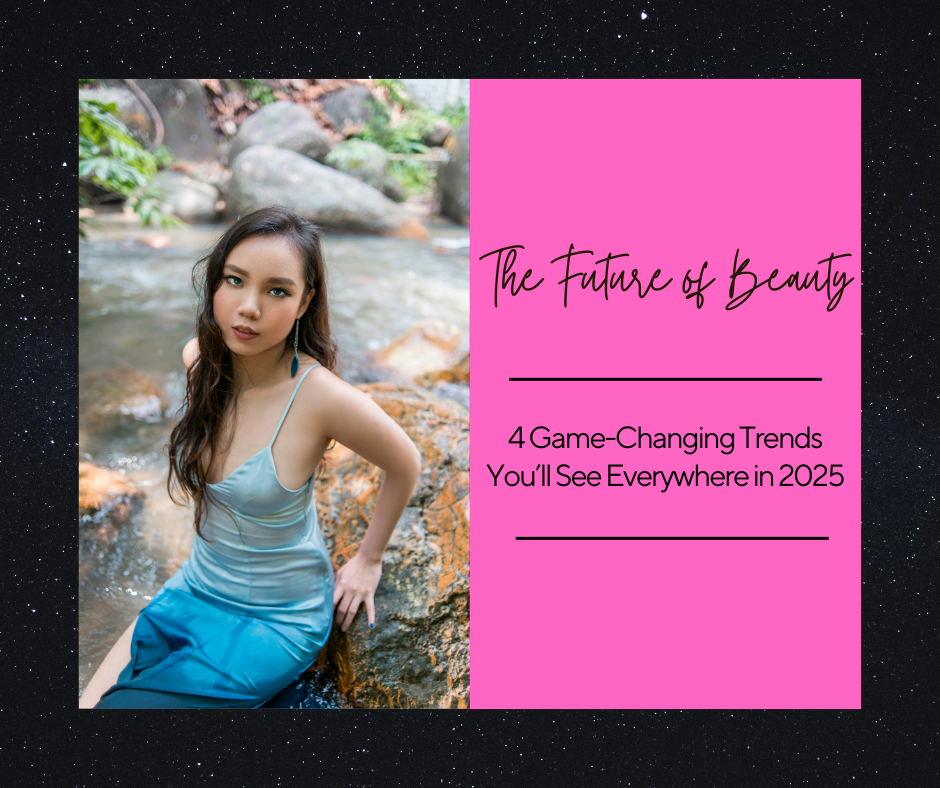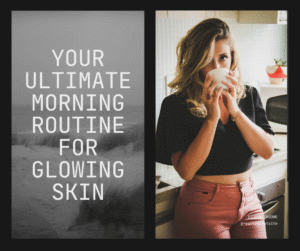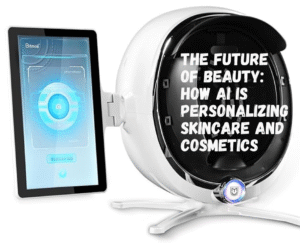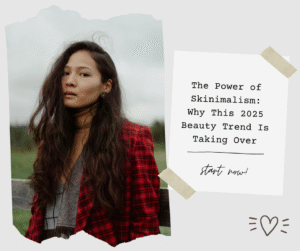This post may contain affiliate links. I may receive compensation if you sign up for or purchase any products through the links below. As an Amazon Associate and affiliate marketer for many other businesses, I earn from qualifying purchases. Please read my disclosure for more information.
The beauty industry has long been a dynamic domain characterized by continuous evolution and transformation. Over the years, consumer preferences have shifted dramatically, influenced by factors such as technological advancements, cultural movements, and environmental considerations. This ongoing evolution has resulted in the emergence of various beauty trends, each reflecting the zeitgeist of its respective era. As we look toward 2025, it is crucial to explore some of the transformative trends that promise to reshape our understanding of beauty.
One of the primary driving forces behind these trends is innovation. With the rise of cutting-edge technologies, including artificial intelligence, augmented reality, and biotechnology, the beauty landscape is poised for substantial changes. Brands are now leveraging these technologies to enhance product formulation, customer engagement, and overall shopping experiences. As a result, consumers can expect more personalized and efficient solutions, ultimately leading to a more tailored beauty experience that resonates with individual preferences and needs.
Another significant aspect influencing beauty trends is the growing demand for sustainability and ethical practices. As consumers become increasingly aware of their environmental impact, there is a collective push for brands to adopt eco-friendly practices and transparency in their sourcing and manufacturing processes. This shift reflects a broader social consciousness that values responsibility over mere aesthetics, leading to a new paradigm within the beauty industry.
As we delve deeper into the future of beauty, it is essential to recognize the impact of social media and digital platforms. The advent of influencer culture has revolutionized how beauty products are marketed and consumed, with a focus on authenticity and consumer-generated content. These shifts and innovations underscore the importance of adapting to changing consumer demands as we enter this exciting new chapter in beauty.
Sustainable Beauty Practices
The beauty industry is currently undergoing a significant transformation as it prioritizes sustainability amid growing consumer awareness and expectations. The shift toward environmental consciousness has prompted brands to adopt eco-friendly practices, thereby reshaping the landscape of beauty products for 2025 and beyond. Eco-conscious consumers are increasingly advocating for sustainable options, pushing beauty brands to innovate and adapt to these evolving demands.
One of the most notable trends in sustainable beauty is the rise of biodegradable packaging. Traditional plastic packaging has long been a concern due to its impact on the environment, leading to the development of alternatives that break down more easily and leave less environmental footprint. Many companies are now choosing biodegradable materials or adopting refillable packaging systems, which allow customers to reuse containers, thus minimizing waste. This practical approach not only reduces the carbon footprint but also resonates with consumers who seek brands that align with their values.
Moreover, cruelty-free products continue to gain prominence in the beauty market. The movement against animal testing has led to a surge in demand for products that are certified cruelty-free, compelling brands to modify their testing processes. This commitment to humane practices serves as a significant differentiator in the market, particularly among younger consumers who prioritize ethical considerations in their purchasing decisions.
Another critical aspect of sustainable beauty is the sourcing of ingredients. Many beauty brands are shifting towards sustainably sourced materials, ensuring that their components are not only effective but also derived from renewable resources. This trend encompasses the use of natural ingredients, as well as a focus on environmentally friendly farming practices, which further align with consumer expectations for responsible and transparent product formulations.
In conclusion, the move towards sustainable beauty practices signifies a broader cultural shift, emphasizing the importance of environmentally conscious choices. The integration of biodegradable packaging, cruelty-free products, and sustainable ingredient sourcing reflects a commitment to ethical beauty that is set to dominate the industry in 2025.
Personalized Beauty Solutions
In recent years, the beauty industry has experienced a significant transformation, primarily driven by the advancements in technology. One of the most notable trends is the move towards personalized beauty solutions, where products and routines are increasingly tailored to meet individual needs. This shift is primarily facilitated by artificial intelligence (AI) and data analytics, which allow brands to offer bespoke skincare and makeup experiences.
AI technology plays a crucial role in analyzing various skin types, concerns, and preferences, enabling companies to generate customized product recommendations. Through sophisticated algorithms, brands can examine user data to identify specific skin issues, such as dryness, aging, or breakouts. Consequently, consumers can receive skincare routines that address their unique skin concerns effectively, enhancing both satisfaction and results.
Furthermore, the integration of data analytics into the beauty experience enables brands to gather insights from consumer feedback and preferences, refining their product offerings continually. For instance, certain companies implement surveys and skin assessments to create a detailed beauty profile for each customer. This information equips brands with the ability to formulate products that meet diverse skin conditions and preferences, thus fostering a sense of individual connection with consumers.
Moreover, the emergence of augmented reality (AR) technology allows users to visualize how products will perform on their unique skin tones before making a purchase. Virtual try-on applications let consumers experiment with colors and formulations without the need for physical samples, making the shopping experience both convenient and personalized.
As the beauty landscape evolves, the emphasis on personalized solutions will only intensify. Brands that effectively leverage AI and analytics to deliver tailored experiences are likely to flourish, as consumers increasingly seek products that cater to their distinct beauty needs. Thus, the future of beauty will be characterized by an unprecedented level of personalization, enabling individuals to achieve their desired outcomes effortlessly.
Augmented Reality in Beauty Shopping
The integration of Augmented Reality (AR) into beauty shopping is transforming the retail landscape in remarkable ways. As consumer preferences shift towards more interactive and personalized experiences, AR technology is becoming a cornerstone of beauty retail strategies. One of the most noteworthy applications of AR in this domain is the concept of virtual try-ons. Consumers can utilize their smartphones or smart mirrors equipped with AR software to visualize how cosmetics such as lipsticks, foundations, and eye shadows will look on their skin without physically applying the products.
Leading beauty brands, such as L’Oréal and Sephora, are already leveraging AR technology through mobile applications and in-store devices. For instance, Sephora’s Virtual Artist app allows users to upload their photos and experiment with various products virtually. This not only enhances user engagement but also significantly reduces the likelihood of purchase regret, as consumers get a more informed view of the products before committing to a sale. Additionally, brands like Ulta Beauty have incorporated AR technology in their e-commerce platforms, fostering a more immersive shopping experience that combines convenience with personalization.
Looking ahead, the potential for AR in beauty shopping seems boundless. With advances in facial recognition algorithms and improvements in virtual reality hardware, we can expect even more enhanced features, such as texture visualization and real-time color matching. These innovations will refine the consumer experience and help bridge the gap between online and in-store shopping. Furthermore, as more consumers embrace this technology, we can anticipate an increase in demand for tailored beauty recommendations driven by AR analytics. In essence, the future of beauty shopping will likely hinge upon augmented reality, reshaping how consumers select and experience beauty products.
Health and Wellness Integration
The beauty industry is undergoing a significant transformation as it increasingly embraces the principles of health and wellness. As consumers become more health-conscious, there is a notable shift towards products that not only enhance appearance but also promote overall well-being. This intersection between beauty and wellness reflects an evolving understanding that true beauty encompasses both physical and mental health.
One of the defining trends in this realm is the incorporation of health-conscious ingredients into beauty products. Ingredients such as adaptogens, superfoods, and botanical extracts are becoming staples in skincare and cosmetics. These components are celebrated not only for their aesthetic benefits but also for their potential to improve skin health, reduce stress, and enhance mood. For instance, formulations that include turmeric, known for its anti-inflammatory properties, or ashwagandha, recognized for its stress-relief capabilities, illustrate how beauty brands are aligning themselves with holistic health trends.
Another vital aspect of this health and wellness integration is the rise of self-care rituals that focus on mental well-being alongside physical appearance. Consumers are increasingly seeking experiences that promote relaxation and mindfulness, viewing beauty routines as an opportunity for self-care rather than merely a chore. This emphasis on self-care is reflected in the popularity of at-home spa treatments, soothing aromatherapy products, and mindfulness practices, which all contribute to a more fulfilling beauty regimen.
As we move towards 2025, it is anticipated that the blending of beauty with health and wellness will deepen. Expect to see even more brands developing innovative products that harmoniously merge skincare with scientific advancements in nutrition and mental health. This not only signals a shift in consumer demand but highlights an important societal understanding: that the pursuit of beauty is a multifaceted journey, one that intertwines with overall health and well-being.

Influence of Social Media and Content Creators
In recent years, social media has significantly transformed the beauty landscape, creating a new paradigm in how trends are developed and disseminated. Platforms like Instagram, TikTok, and YouTube have emerged as dominant forces in the beauty industry. Content creators, or influencers, play a pivotal role in shaping the preferences and purchasing behaviors of consumers. They have the ability to reach vast audiences and often serve as trusted sources of information, thereby enhancing product visibility and popularity.
The impact of social media influencers on beauty trends cannot be overstated. A single review or tutorial can propel a product to viral status, often resulting in heightened demand and sales. As authenticity becomes a critical factor for consumer trust, many influencers focus on transparently sharing their opinions and experiences with beauty products. This shift encourages brands to engage in genuine collaborations rather than traditional advertising methods, which may not resonate as effectively with conscious consumers.
Looking ahead to 2025, it is likely that the influence of social media in the beauty sector will continue to evolve. The potential for new platforms, designed specifically for niche audiences or user-generated content, could emerge, further diversifying the channels through which beauty trends are communicated. Brands may leverage advanced algorithms and machine learning to target consumers more effectively based on their preferences, grooming a new generation of influencers who cater to specialized sectors within the beauty domain.
Furthermore, as technological advancements continue to shape our daily interactions, the integration of augmented reality (AR) and virtual reality (VR) in beauty apps could redefine the influencer-consumer relationship. This will allow consumers to engage with products in immersive ways, further blurring the lines between content creators and brands. In conclusion, the synergy between social media and content creators will undeniably influence beauty trends, steering the industry towards greater innovation and connection with consumers by 2025.
Innovative Ingredient Discoveries
The future of beauty products is anticipated to be driven by innovative ingredient discoveries that respond to the evolving demands of consumers seeking efficacy and safety. By 2025, the trend towards clean beauty is expected to dominate the market, emphasizing transparency and the avoidance of harmful chemicals. Brands are increasingly committing to utilizing natural, ethically sourced ingredients that benefit both the skin and the environment. This shift not only aligns with consumer preferences but also reflects a broader awareness of sustainability within the beauty industry.
A critical area of innovation lies within plant-based ingredients. The ongoing exploration of various botanical sources is leading to the identification of powerful yet gentle components that can deliver remarkable results without compromising skin health. For instance, extracts from adaptogenic plants are gaining traction, noted for their ability to help the skin resist stressors and maintain its balance. As research progresses, expect to see a wider range of effective plant-derived constituents making their way into skincare formulations.
In addition to natural sources, advancements in lab-synthesized ingredients are set to make a significant impact. These ingredients are engineered for enhanced performance, targeting specific skin concerns with precision. As formulators gain access to novel technologies, customization of beauty products will become increasingly feasible, allowing tailored solutions that meet individual needs. Moreover, some lab-synthesized ingredients promise increased stability and efficacy, extending the shelf life and overall effectiveness of products.
As beauty consumers become more educated about ingredient safety and function, the acceptance of both clean and lab-created components is likely to rise. The combination of these ingredient trends will shape the future landscape of beauty, ultimately leading to products that not only cater to aesthetic needs but also prioritize consumer well-being and environmental sustainability.
Changing Demographics and Inclusivity
The beauty industry is undergoing a significant transformation as it increasingly adapts to the evolving demographics of its consumer base. The demand for inclusivity has become paramount, with brands recognizing the necessity of catering to diverse consumer needs. In a global society marked by varied cultures, backgrounds, and identities, the importance of representation cannot be overstated. As a result, beauty brands are reevaluating their product offerings to ensure they are more inclusive and reflective of the population’s diversity.
This shift towards inclusivity is evident in the expansion of product ranges that cater to a wider spectrum of skin tones, types, and textures. In recent years, we have seen an increasing number of brands releasing extensive shade collections for foundations and concealers, ensuring that individuals of all skin colors can find suitable options. Additionally, brands are increasingly mindful of the unique requirements of different skin types, including oily, dry, and combination skin. This level of attention to diversity allows consumers to find personalized products that meet their specific needs, fostering a strong sense of belonging within the beauty community.
Moreover, the push for inclusivity extends beyond skin tones; it encompasses gender identities as well. As societal attitudes towards gender fluidity continue to evolve, brands are recognizing the need for gender-neutral products and marketing campaigns. This shift promotes a sense of acceptance and inclusivity, allowing individuals to express their identities freely without the confines of traditional beauty norms.
In conclusion, as we move towards 2025, the beauty industry will likely continue to embrace these changing demographics and enhance its commitment to inclusivity. By doing so, brands not only foster consumer loyalty but also contribute positively to the larger discourse on representation and equality within the beauty sector.
Conclusion: Embracing the Future of Beauty
As we explore the future of beauty, it becomes clear that the industry is on the brink of groundbreaking changes. The trends highlighted in this blog post reflect a shift towards sustainability, inclusivity, technology integration, and personalized experiences. Each of these changes is poised to redefine how consumers interact with beauty products and services, aligning with their values and individual needs.
The emphasis on sustainable beauty is not just a trend; it represents a significant cultural shift towards environmental responsibility. Consumers are increasingly seeking products that minimize their ecological footprints, prompting brands to innovate in sourcing, packaging, and formulation. This commitment to sustainability will likely enhance brand loyalty and reshape market dynamics in 2025.
Inclusivity in beauty signifies a broader representation of diverse identities and experiences. As companies expand their offerings to encompass various skin tones, types, and cultural backgrounds, consumers will benefit from a wider range of products that cater to their unique beauty needs. This trend encourages everyone to embrace their individuality, fostering a more accepting beauty norm.
Furthermore, technology’s role in enhancing the beauty experience cannot be overstated. From virtual try-ons to AI-driven skincare assessments, technology is making beauty more accessible and personalized. As these innovations continue to evolve, they will undoubtedly transform consumer engagement, making the beauty journey more tailored and enjoyable.
As we look ahead to 2025 and beyond, it is essential for consumers to stay informed about these transformative trends. Embracing these changes not only enriches personal beauty journeys but also contributes to a broader cultural evolution within the industry. By engaging with sustainability, inclusivity, and technological advancements, individuals can play an active role in shaping the future of beauty, ensuring it reflects collective values and aspirations.








